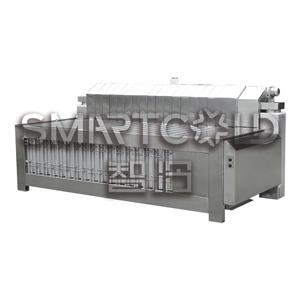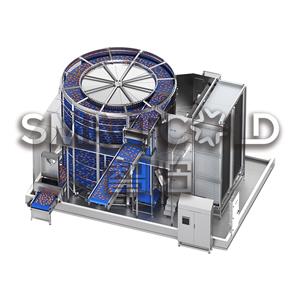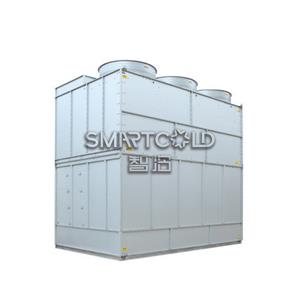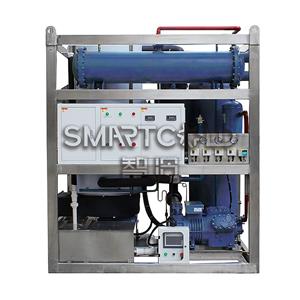Cooling ton (RT)-horse (HP)-power (KW) and unit conversion
Cold tons (RT):
Air-conditioning refrigeration unit, cold ton, also known as freezing ton, freezing ton refers to the energy required to freeze one ton of water into ice. (Note: 1 cold ton is the amount of refrigeration required to make 1 ton of 0°C water into 0°C ice in 24 hours.) 1 ton of 0°C water can be converted into 0°C ice in 24 hours , the refrigerated ton represents the refrigeration capacity of the freezer.
Horse (HP):
In the calculation of the number of horses (HP) of the cooling capacity of the air conditioner, it is calculated by kcal or watt (W). Generally speaking, 1PH=2000 kcal, and the calculation in international unit should be multiplied by 1.16. So 1PH=2324W.
In daily life, 2500W is used as the standard 1PH to calculate.
23 represents a small one; the cooling area is 10-14 square meters.
26 represents positive 1; the cooling area is 14-18 square meters.
32 represents a small 1.5 horses; the cooling area is 18-22 square meters.
35 represents positive 1.5 horses; the cooling area is 22-25 square meters.
1P--2200-2600W; the applicable area is 12-15 square meters.
1.5P--3000-3800W; the applicable area is about 18 square meters.
2P--4000-5500W; the applicable area is about 28 square meters.
Power (W):
Power refers to the work done by an object in unit time, that is, power is a physical quantity that describes the speed of work. The amount of work is fixed, and the shorter the time, the greater the power value. The formula for finding power is power = work/time. Power is used to describe the speed of work, and the amount of work done per unit time is called power.
Unit conversion: 1 US cold ton = 3024 kilocalories per hour (kcal/h) = 3.517 kilowatts (kW) 1 Japanese cold ton = 3320 kilocalories/hour (kcal/h) = 3.861 kilowatts (kW) 1 horsepower (or 1 horse power) = 735.5 watts (W) = 0.7355 kilowatts (kW) 1 kilocalorie/hour (kcal/h) = 1.163 watts (W) Celsius °C = (Fahrenheit °F-32) 5/9 1HP=2.5kW=735.5W: Note: 2.5kW corresponds to cooling capacity, and 735.5w corresponds to electric power; First of all, it is necessary to find out the unit of heat. Heat energy is also a kind of energy. The international unit of work and energy is joule. Joule is equivalent to a newton of force (N). The work done, the symbol for joules is J. The legal unit of heat in my country is J. Under standard atmospheric pressure, when 1g of water is heated or cooled, and its temperature is raised or lowered by 1 degree, the heat added or released is called 1 calorie, which is expressed in cal. In engineering, the heat is often expressed as 1000 times the calorie. , known as kilocalories or kilocalories, expressed in kcal. Under standard atmospheric pressure, 11b (pounds) (11b=0.454kg) of water is heated or cooled, and when its temperature is raised or lowered by 1 degree Fahrenheit, the heat added or removed is called a British thermal unit, the symbol is Btu . Common conversion formulas: 1kJ (kilojoule) = 0.239kcal (kilocal) 1kcal (kcal) = 4.19kJ (kilojoule) 1kcal=3.969Btu 1Btu=0.252kcal 1kcal=427kg.m 1kW=860kcal/h 1 American cold ton=3024kcal/h=3.51kW 1 Japanese cold ton=3320kcal/h=3.86kW For example, a 40kW air conditioner has a cooling capacity of 40*860=34,400 kcal. Civil air conditioners like to use (H)P as the unit, 1(H)P=0.735kW, the general energy efficiency ratio is 3.2, and the cooling capacity is 2352W, which is about 2022 kcal converted into kcal. It can be said that the cooling capacity of 1(H)P air conditioner is 2000 kcal. Refrigerated cold storage matching air cooler: The load per cubic meter is calculated according to W0=75W/m3. 1. If V (cold storage volume) < 30m3, the cold storage with frequent opening times, such as fresh meat storage, multiply the coefficient A=1.2; 2. If 30m3≤V<100m3, the cold storage with frequent opening times, such as fresh meat storage, multiply the coefficient A=1.1; 3. If V≥100m3, the cold storage with frequent opening times, such as fresh meat storage, multiply the coefficient A=1.0; 4. If it is a single refrigerator, multiply the coefficient B=1.1, and choose W=A*B*W0 (W is the load of the cooler); 5. The matching between the refrigeration unit and the air cooler of the cold storage is calculated according to the evaporating temperature of -10 degrees. The above calculation is a reference value, and the exact calculation is based on the cold storage load calculation table.
Refrigerated cold storage matching air cooler:

The load per cubic meter is calculated according to W0=70W/m3.
1. If V (cold storage volume) < 30m3, the cold storage with frequent opening times, such as fresh meat storage, multiply the coefficient A=1.2;
2. If 30m3≤V<100m3, the cold storage with frequent opening times, such as fresh meat storage, multiply the coefficient A=1.1;
3. If V≥100m3, the cold storage with frequent opening times, such as fresh meat storage, multiply the coefficient A=1.0;
4. If it is a single freezer, multiply the coefficient B=1.1, and choose W=A*B*W0 (W is the load of the cooling fan)
5. When the cold storage and the low temperature cabinet share the refrigeration unit, the matching of the unit and the air cooler shall be calculated according to the evaporating temperature of -35 degrees.
The above calculation is a reference value, and the exact calculation is based on the cold storage load calculation table.
The matching air cooler for the cold storage processing room:
The load per cubic meter is calculated as W0=110W/m³.
1. If V (volume of processing room) < 50m³, multiply the coefficient A=1.1;
2. If V≥50m³, multiply the coefficient A=1.0. The final cold storage air cooler selection is W=A*W0 (W is the air cooler load);
3. When the processing room and the medium temperature cabinet share the refrigeration unit, the matching of the unit and the cooling fan is calculated according to the evaporating temperature of -10ºC. When the processing room is separated from the medium temperature cabinet, the matching of the cold storage unit and the cooling fan is calculated according to the evaporating temperature of 0ºC. The above calculation is a reference value, and the exact calculation is based on the cold storage load calculation table.
[Disclaimer]: The copyright of this official account article belongs to the original author, and the content is the author's personal opinion. If there is any infringement, please contact to delete it.




